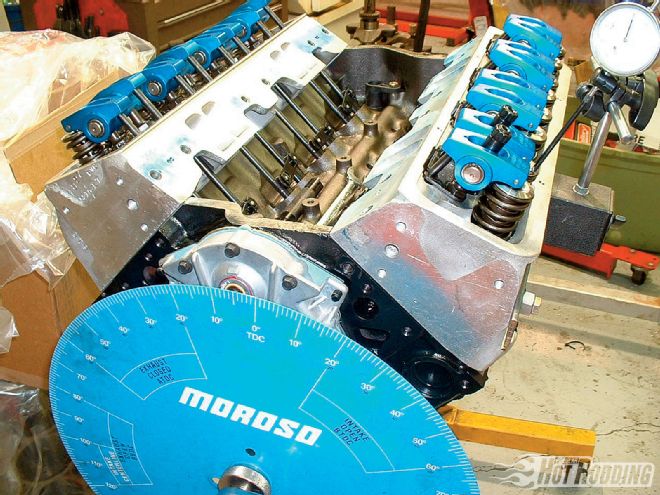
So there you are, elbow deep in lifter valley goo trying to trace down the overly suspicious knocking noise in your precious engine and you strike gold. Or bearing flakes. Ouch. So out she comes for a rebuild. But maybe while you're in there you might as well up the ante a little and add some power to the old wheezer. The problem is, the budget is already stretched pretty thin and with an unpredictable economy, you don't necessarily want to put all your eggs in this basket.
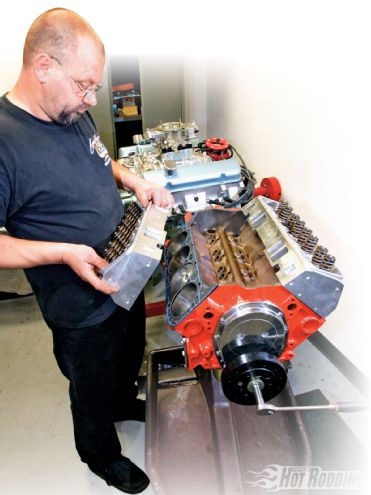
What could possibly be a solution to this dilemma? Well, your trusty staff at PHR has consulted with several engine builders from around the country to compile a list of quick and easy tricks that will pick up power and not blow out your wallet. Naturally, you don't have to have a blown engine to get started making more power, and many of these tips are easy to do without yanking the engine. The power and price estimates we've given can vary by application, but are fairly average throughout the industry. Nevertheless, it's not uncommon to bring that tired 200-horse 350 Chevy to well over 350 horses with just the tips here.
Get The Right Cam
20-50 hp for $300
Sliding your finger to the bottom of the page has been the traditional man-method of picking cams for generations, but a recent conversation with Scooter Brothers of COMP Cams shed some light on the proper methodology. First and foremost, make a determination as to what you expect from your car. Is it street? Strip? Do you have vacuum-operated accessories or power brakes that could be affected by your cam choice? Once you have a clear and realistic vision on what you want from your car, consult directly with the cam manufacturer or use inclusive cam-suggestion software like CamQuest from COMP Cams.
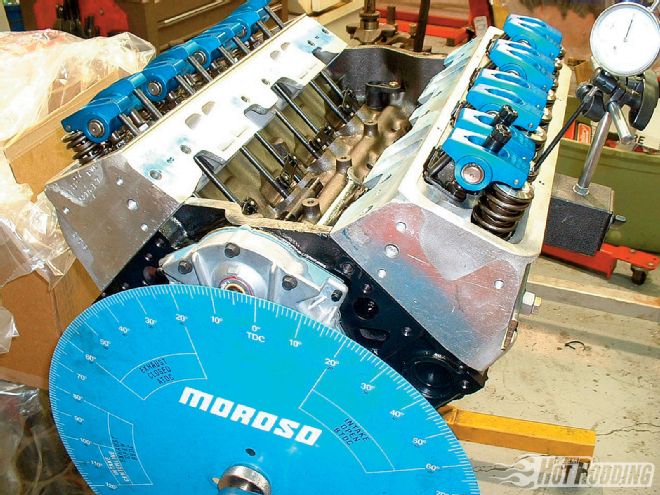 When setting up your camshaft, it is critical that you check piston-to-valve clearance if you have a tight lobe separation or have advanced the cam significantly.
When setting up your camshaft, it is critical that you check piston-to-valve clearance if you have a tight lobe separation or have advanced the cam significantly.
If you are picking your own cam, remember that typically, most mild hot rods do well with around a 10- to 20-degree increase in duration without causing too many adverse affects. At 20 to 40 degrees bigger, you're pushing the limits of a daily driver. In previous Engine Masters Challenge engines, lobe separations as tight as 99 degrees have helped the competitors take advantage of scavenging during overlap and build a tremendous amount of power in the 2,500- to 6,500-rpm range, but at the expense of idle quality and lack of idle vacuum. Again, befriend the cam company tech lines for the best advice.
Degree Your Cam
5-30 hp for $0
Making sure your new or reused cam is installed correctly can add a great amount of driveability and power. Longtime engine builder Randy Malik commented that one of the tricks for big-block Fords built in the '70s and '80s was to install an early model timing chain to advance the cam since the factory decided to retard their cams by 7 degrees for emissions requirements. Moving the cam back to the original "early" position is worth 30 horses all by itself! Again, Scooter chimed in: "If it is more street-driven, you can advance the cam a little bit. If it is more track-driven, you can retard it a little bit."
 The back-cut Manley intake valve on the right picked up 5-10 cfm between .100-.500 lift.
The back-cut Manley intake valve on the right picked up 5-10 cfm between .100-.500 lift.
Lash The Valves 0-15 hp for $0 Even on a hydraulic cam, making sure all the valves have the same amount of lash or preload is a good way to get the engine to work in the rpm range you want. Loosening the lash slightly tends to pick up a little power on the street, since it fools the engine into thinking it has a smaller, torquier cam, and tightening the lash tends to work a little better at the track to raise the rpm range. With hydraulic cams, they may come with .060-inch preload on the lifter. Randy Malik says that reducing the preload to around .020 inch with adjustable rockers or shims has been shown to raise the usable rpm range of some engines up to 500 rpm.
File-Fit Rings
2-10 hp for $30
Not only can you pick up a little power, you can drop the amount of oil usage by upgrading to file-fit piston rings instead of just using "drop-ins" that may end up with huge gaps, depending on your cylinder bores. Don't forget when filing rings to deburr the end you filed, or it can gouge the cylinder walls or damage the piston ring lands. A points file (you still have one, right?) or honing stone works quite well for this. Following the recommendations for gaps as provided by the ring manufacturers has always proven safe and accurate as a starting point.
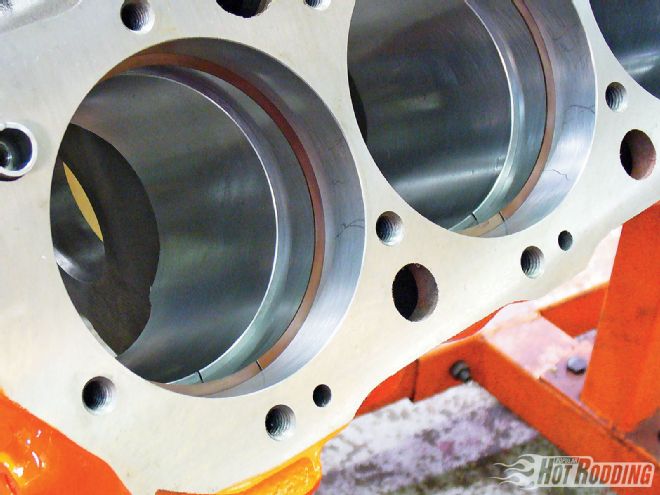 Either leave your rings in the bores they were gapped to, or make a holder to separate each cylinder's ring set. Remember our old friend p tells us that for each .001 inch the cylinders vary from each other, the gaps will be over .003-inch different.
Either leave your rings in the bores they were gapped to, or make a holder to separate each cylinder's ring set. Remember our old friend p tells us that for each .001 inch the cylinders vary from each other, the gaps will be over .003-inch different.
Get A Big Oil Pan
0-25 hp for $200
Joe Stefanacci of Stef's Fabrication Specialties says getting a customer the right pan can not only add power, but also help longevity. "I'd like to see him get a bigger capacity pan to put more oil in to help cool the engine down. It will help cool it down, and it will have a constant supply going to the crankshaft. We want to put the biggest pan we can in the smallest place we can." As for which type of oil pump he recommends, Stef says: "We like to see a high-volume oil pump in there if it's a bigger cubic-inch engine, like over 383, in a small-block. On big-block pieces, we just run a standard-volume pump. Anything when you start getting higher in the cubic inches we like to see a high-pressure pump."
Plug It
0-5 hp for $25
Spark plugs might not seem like an important part sometimes, but getting the right plug now that your engine is hopped up and making more heat is very important. If you've increased the power of your engine significantly, consider using a cooler heat range plug to avoid making the electrode a hot spot and a source of detonation. Most manufacturers, like Champion, have a pretty simple heat range methodology where the higher numbers are hotter than the lower numbers. Be sure to check with the manufacturer to make sure this is true for your brand of choice though!
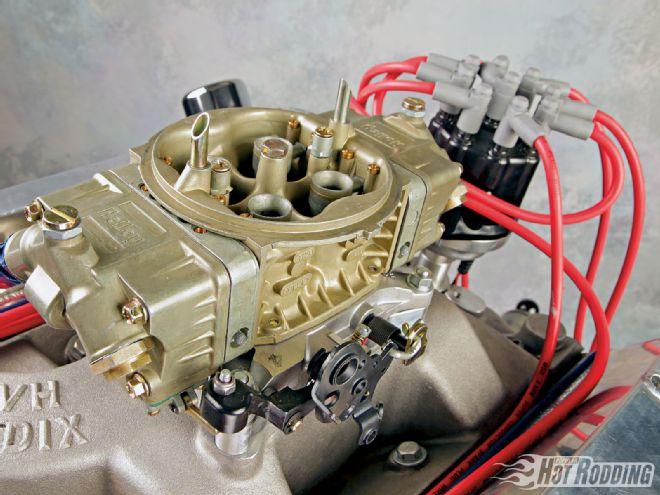 Holley carbs have been modified by countless tuners, but the theory behind them never changes. As the diameter of the venturi increases, the velocity of air travelling through it decreases. That means the velocity of air travelling through the boosters decreases, forcing you to jet up the carb to get the same amount of fuel as a "faster" booster.
Holley carbs have been modified by countless tuners, but the theory behind them never changes. As the diameter of the venturi increases, the velocity of air travelling through it decreases. That means the velocity of air travelling through the boosters decreases, forcing you to jet up the carb to get the same amount of fuel as a "faster" booster.
Tighten The Quench
5-15 hp for $125
If you do have the engine out for freshening, having the deck machined so that the final clearance from the top of the piston to the surface of the head, including the thickness of the gasket, is somewhere between .035-.045 inch helps in two ways. First and most obvious, you'll raise your compression ratio. Considering most smogger 350 Chevys only had about 8:1 compression, and big-blocks were in the mid 7s, a little extra pop will really help. Second and actually more important, that tight quench will squeeze the air/fuel mixture into a more central part of the combustion chamber and make a more homogenous mixture to burn. Even with the higher compression ratios, detonation is staved off much longer than with a "bad-quench" engine. If you are not planning to deck your block, look into various thickness head gaskets like those from
the Fel-Pro Performance MLS line to adjust your quench without any machine work.
Back-Cut The Valves
5-15 hp for $40
This is one of those small tricks that is worth way more than the paltry sum it usually costs for this extra step. If you have the heads apart to lap the valves or you have them at a shop, the easiest thing to do is mark the face of the valves with layout fluid or even a Sharpie, lap the valves in, then just have your machinist give the valves a standard 30-degree back-cut up to the edge of the lap mark-simple and worth an average of 5-10 cfm. It's worth more power than most gasket-match jobs!
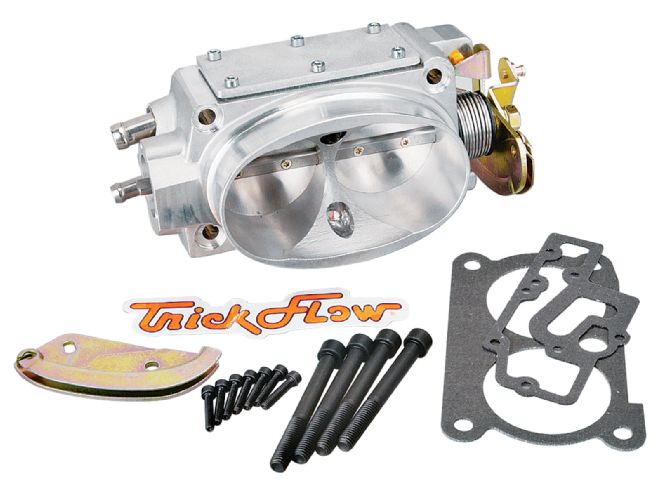 Bumping the stock throttle body on an LT1 to a dual 58mm throttle body is typically worth 5-10 rwhp. Not a bad investment.
Bumping the stock throttle body on an LT1 to a dual 58mm throttle body is typically worth 5-10 rwhp. Not a bad investment.
Don't Over-Carburete
0-20 hp for $300
You'll see this topic crop up elsewhere in this issue-it's an easy area to swing and miss big time! If you plan on upgrading to a different carb like one of the quadzillion Holleys out there, stick with a size that is rpm and cubic-inch appropriate for your engine. While it is true that larger carbs do tend to make more peak horsepower than smaller carbs, reality says that most engines prefer a smaller venturi carb to get better signal to the boosters, better fuel atomization, better throttle response, and actually more midrange torque. Historically, most mild 302- to 340-inch engines do well with a 600-cfm carb, 340- to 360-inch engines like a 650, 360 to 390-inch engines a 700, and only over 390 cubes would a 750 really start to perform well.
Go Big With The Throttle Body
0-20 hp for $400
Unlike their predecessors, EFI engines don't have to worry about atomizing fuel at the blades-they just act as air doors. The bigger the door, the more air walks in, the more fuel the injectors spit out, and the more power you make. And isn't making more power what this is really all about?